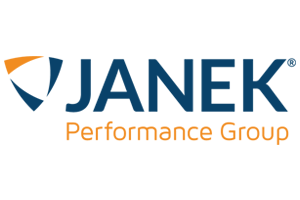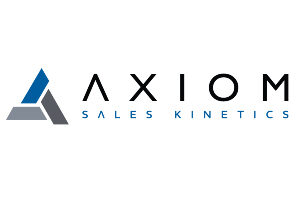Today, there is hardly any more popular topic than artificial intelligence (AI) — its current capabilities, its future possibilities, its benefits and dangers. While AI will certainly be helpful and impactful, not even experts and scholars know what the “AI revolution” will look like ten or twenty years from now, nor when the true “year of AI transformation” will be.
What is far more relevant is to look at what AI can do today for sales training, as well as what it cannot do — what the human workforce alone can accomplish. Let’s take a look at how the advantages and limitations of AI for sales training break down, so we’ll have a more realistic idea of this groundbreaking technology. And ultimately, with these lessons in mind, we’ll have a clearer sense of how to respond to the uncertainty of the future in terms of AI’s “revolution” and “transformation.”
The Uses of AI for Sales Training: Reversing Dangerous Productivity Trends
For sales training, one of the gravest threats today is the decline in workforce productivity, which has seen a decline in recent years.
For sales teams, productivity is mission critical — the sales force is a company’s front line, after all. If their rate of productivity falls, sell-through rates and revenue decline. Though explanations for this productivity decline vary (post-COVID-19 inflationary pressures), corporate training leaders must find some way of creatively addressing it.
Arguably, today’s vanguard of AI-guided technologies can help stem the fall in productivity by intelligently driving proactive sales behaviors. Past learning platforms used pre-created, relatively static content modules to train sales teams, a “one-size-fits-all” approach that might have worked in the pre-pandemic era, before the world of work changed, becoming more remote, deskless and independent.
Now, with AI, training doesn’t have to end when a course is completed; rather, it becomes an ongoing, flexible and evolutionary process. The full sales lifecycle becomes an opportunity to train and reinforce training, because AI can actively respond to the context, needs and behavior of a salesperson.
The current generative pre-trained transformer (GPT) large language model (LLM) AI model can simulate a personal assistant, replying to the salesperson’s queries with immediate recommendations based on present-moment contextual information and the individual sales person’s past performance. This in turn enhances productivity and engagement in a few notable ways:
- Shortening the distance between the salesperson and their goal/quota.
- Making the salesperson feel focused and organized with clear next steps specific to them.
- Training the salesperson in sales practices while enabling them to complete in-the-moment tasks.
- Helping develop the kind of independent, self-guided salesperson necessary for a more remote environment.
- Changing behaviors to be more productive in a manner that applies, empathetically, to the salesperson’s felt challenges right now.
Just play around with OpenAI’s chatbot, ChatGPT, to see how it could work. When a chatbot has been fed information specific to an industry and company — that is, when it itself has been trained — it can act as a live trainer, while being more individualized and personalized than a human training specialist, who might be overburdened with the needs of several salespeople at once.
In the age of the algorithm, when the workforce expects technology to suit them the way their social media feeds do, this is a powerful way of adapting training to reflect the salesperson of the present and the near future.
The Limitations of AI for Sales Training: Digitalizing the Sales Team
While many have proclaimed AI revolutionary, there are some who are afraid of its potential. Even Google, who are developing their own AI, want there to be serious regulations in advance of the technology’s expansion and evolution.
Actors and musicians, as well as OpenAI itself, have declared a need for artists to receive credit and compensation for AI material created on their behalf, which in some cases is already quite realistic. For instance, fans of the artist Drake will no doubt remember the AI-created song that was removed from the internet, on orders from his record label, in April 2023.
Yet when it comes to sales, today’s technology is more limited, in part because of the very nature of sales. Whether the end product is business-to-business (B2B) software or retail goods, consumers expect to buy from a real person who can empathize with and relate to their desires, questions and concerns — they want a human touch.
Particularly at a time when inflated prices and questions of a recession loom over the market economy, talking to a seller who understands what it’s like to run a business, raise a family and stay afloat today makes all the difference. The GPT chatbot can provide information and scenario-based suggestions, but it can’t yet simulate “humanness”; and there’s no evidence yet that consumers would like it if it could.
Furthermore, it is entirely possible that we could see regulations in the not-too-distant future requiring AI to be labeled. Otherwise, we would see a proliferation of harmful “deepfakes.” In such a situation, if a company wants to stay above the law, the consumer will have to know that the agent they are talking to is AI and not human. And lawmakers could very well institute regulations that make it less economical to replace human sellers with their artificial variants. This is a way of saying: by all means, explore AI for sales training but know that the situation could change in the coming years, both the technology and the laws around the technology.
Investing in Uncertainty: Tomorrow’s Transformations, Today’s Investments
The hard truth is that we won’t know the nature of the “AI revolution” and the “AI transformation” until after it has already played out to some extent. The technology and regulations will change, and anyone who claims to know differently is probably not being forthright.
By the same token, it is hugely important to pay attention to AI advances in the present moment and invest where it makes sense. Though sales training leaders want to avoid making strong bets on how AI will affect sellers in the future, they can make reasonable inferences about what is possible right now; and right now, AI can enhance productivity by assisting salespeople with context-based suggestions, recommendations and next steps. Having made those inferences, they can then invest in the technology that is right for them.
While margins might be low and returns might be smaller than expected for many companies, the net positive of deploying AI for the sales force at scale could very well outweigh the costs. Yet training leaders cannot make that decision unless and until they are proactive about investigating the capabilities and limitations of today’s AI.










